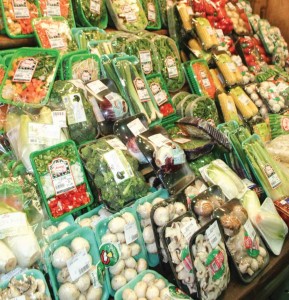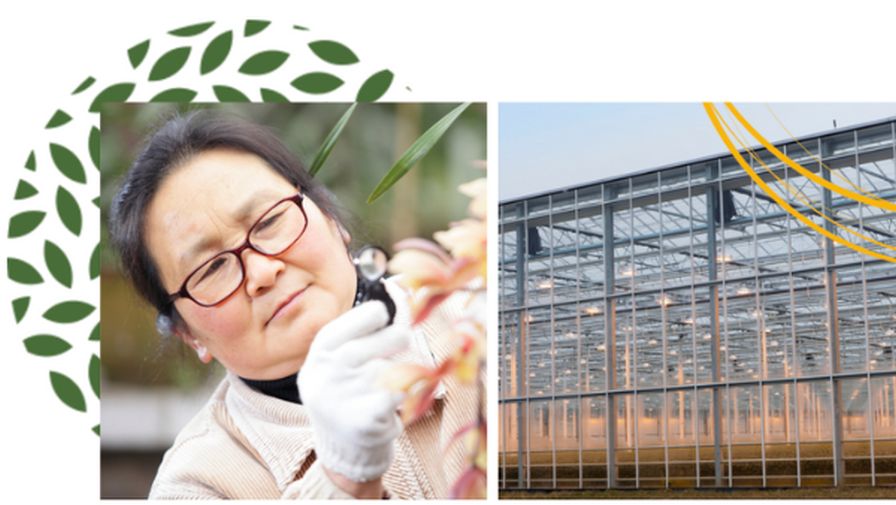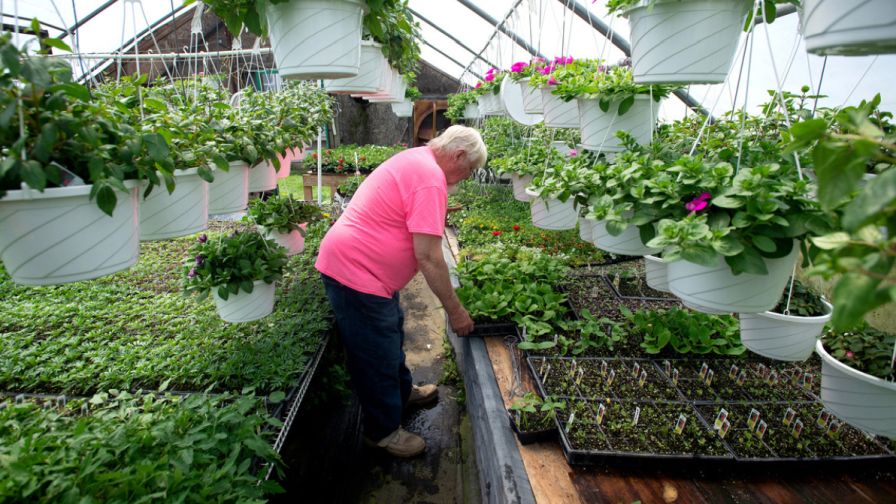Keeping Your Greenhouse Vegetables And Fruits Safe: Overview Of Best Food Safety Practices

packaged vegetables
by Angela L. Shaw, Christopher J. Currey and Michael R. Evans
Greenhouse and controlled-environment food production can provide year-round supplies of fresh and wholesome fruits and vegetables to consumers. The popularity of local foods and sustainable crop production, along with government efforts to increase fresh fruit and vegetable consumption, has strengthened the demand for fresh fruits and vegetables in the U.S.
In the midst of these positive trends, large foodborne outbreaks associated with fresh, minimally processed and processed vegetables and fruits (melons, leafy greens, peppers, tomatoes, seed sprouts, etc.) have occurred periodically. With every outbreak, the market sees dips in the consumer purchasing patterns of that item. Greenhouse-grown produce is not immune to these threats.
Why The Concern With Greenhouse Production?
It has been estimated that 46 percent of reported foodborne illnesses are attributed to fruits, vegetables and nuts. The majority of these outbreaks can be traced to fields and postharvest processing facilities not following recommended GAPs/GMPs. Greenhouse fruit and vegetable production has been viewed as a positive alternative to field production because of the reduction in concerns related to the environment in general, but more specifically soil, wildlife and natural weather events such as floods. This may be true because the number of foodborne outbreaks related to controlled environment production have been rare.
However, in June of 2014, a multi-state foodborne outbreak of Salmonella Saintpaul was linked to greenhouse grown cucumbers in Culiacán, Mexico, that caused 84 infections and 17 hospitalizations in the U.S. Like the majority of foodborne outbreaks, poor sanitation and not following GAPs/GMPs caused this outbreak. It serves as a reminder that food safety should be a priority in all produce production settings. With consumers becoming more concerned over produce food safety, various governmental agencies have been tasked with providing guidance and regulations.
Understanding The Language Of Food Safety Regulations
Federal, state and local laws are the backbone of food safety management in the U.S. food supply. The Federal Food, Drug and Cosmetic Act of 1938 is the first and largest food safety regulation to date and is the leading act cited during litigation from victims of foodborne illness.
The Food Safety Modernization Act proposed Produce Safety Rule, final ruling October 2015, provides additional mandatory guidance specific to fruit and vegetable growers. This specific portion of the rule focuses on food safety control with: agricultural water; biological soils; worker health and hygiene; domestic and wildlife control; sanitation of equipment, tools and buildings; and training. Water quality and safety definitions (including testing numbers, frequency and interpretation), acceptable bio-solids characteristics and training and documentation requirements for workers, along with wildlife guidance, were provided in the ruling. The ruling echoes many GAPs and GMPs that are commonly followed in the fruit and vegetable industry.
With the introduction of new regulations, an opportunity is created for growers to review their current production, harvesting and handling practices to ensure their crops are safe for consumption and their business is protected from liability. Risk assessment of production and handling facilities should be conducted with an end goal of improving policies, procedures and documentation to reflect high quality and safety standards. Through these improvements, food safety risks of causing foodborne illness are reduced.
Brief Overview Of Food Safety Target Areas
Education about proper fresh produce handling from farm to fork helps prevent food safety contamination on the farm, during packing, processing, distribution and within retail settings. Although there are many variations in production systems, greenhouse food crop safety programs should focus on four main areas: substrate, water, facilities and people. In greenhouse production, substrate includes materials such as coir, peat, perlite, rockwool and phenolic foam cubes. Substrate, like soil, can hold harmful chemicals and bacteria along with physical hazards.
Growers should learn more about the sources of their substrates and the production standards used to manufacture the substrates. Further, within the greenhouse operation, proper storage and handling of the substrates should be practiced to minimize the potential for contaminating the substrate with potentially hazardous chemicals or bacteria.
Water is an essential component in greenhouse food crop production. For example, one way contamination occurs is through the use of municipal water during a boil water warning. In the case of a contaminated water source, is there a back-up plan if your water source becomes non-potable or harmful for consumption? Testing of incoming water and recirculating fertilizer solutions can provide assurance that contamination isn’t occurring on a daily basis.
Other food safety areas of concern include workers and sanitation. Poor equipment and facility sanitation practices and poor design of facility and equipment can introduce unwanted food safety risk into the operation. Worker and visitor standards are another area of food safety concerns. Poor worker hygiene, sickness and visitors can introduce unwanted foodborne bacteria and viruses into the facilities that can contaminate the products through hands, clothing and bodily fluids. Having basic written guidance and policies for workers can reduce inconsistencies in production practices and ensure the safety of packaging finished products.
Angela L. Shaw ([email protected]) is an assistant professor in the Department of Food Science and Human Nutrition at Iowa State University. Christopher J. Currey ([email protected]) is an assistant professor in the Department of Horticulture at Iowa State University and Michael R. Evans ([email protected]) is a professor in the Department of Horticulture at the University of Arkansas.









